REFLECT: Post hoc analysis
Efficacy and safety outcomes in patients who deteriorated to Child-Pugh B and patients who remained Child-Pugh A
A post hoc analysis retrospectively evaluated the 11% of patients from REFLECT whose liver function deteriorated to Child-Pugh B versus the 89% who remained Child-Pugh A within 8 weeks after randomization. The post hoc analysis assessed the safety and ORR of LENVIMA, along with landmark analyses of OS and PFS that began after week 8.1
Limitations: This post hoc exploratory analysis was based on postbaseline status and not powered to detect differences in efficacy and safety in these subgroups. The results are for descriptive purposes only and no conclusions can be drawn.
OS after week 8 in Child-Pugh B subgroups1,a
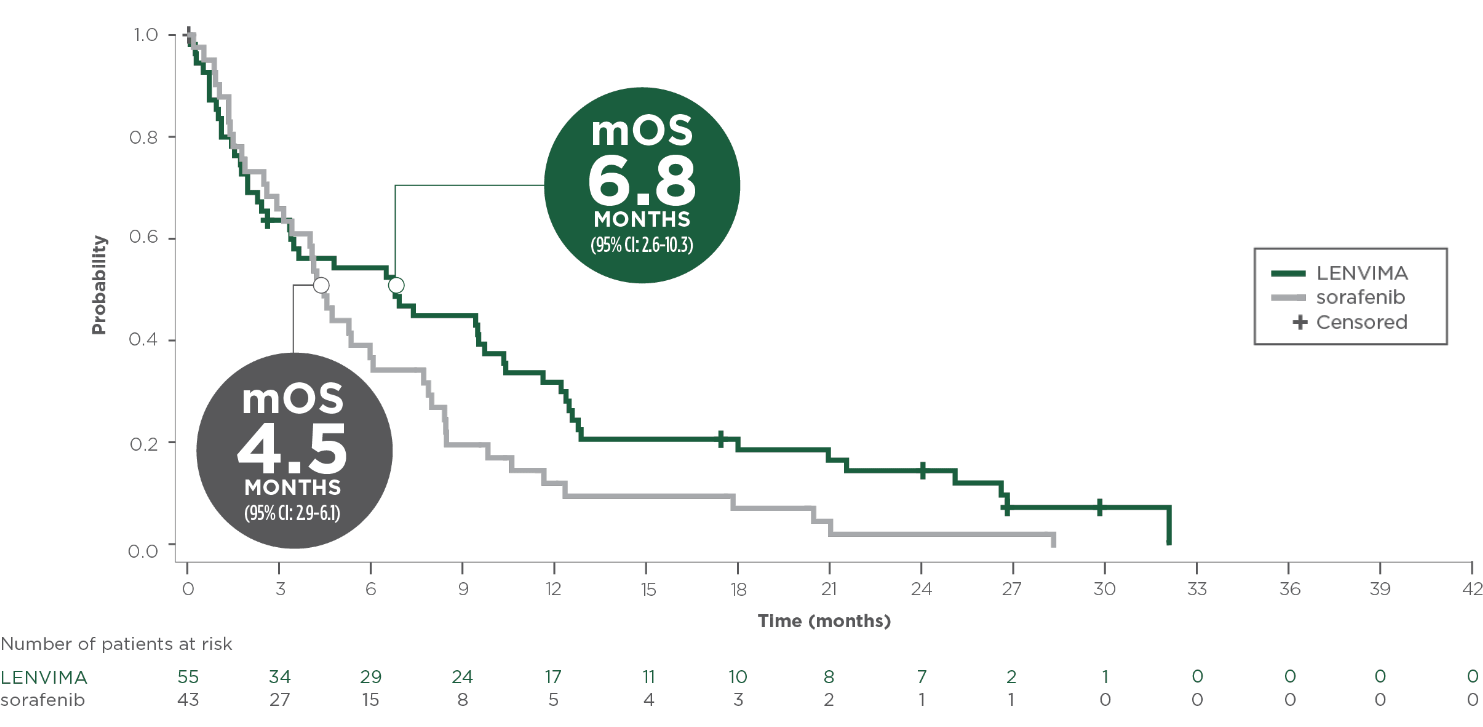
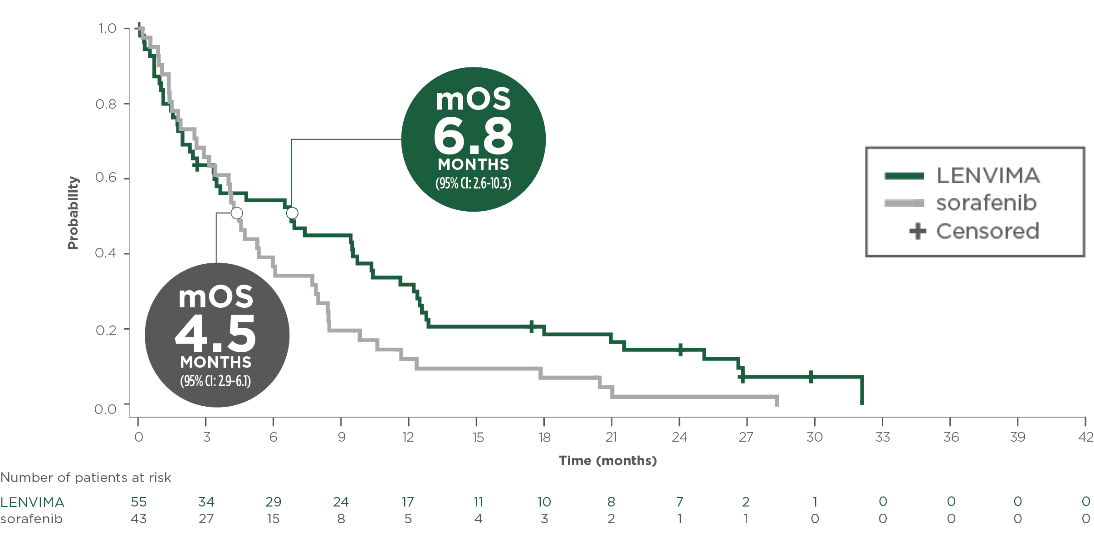
OS after week 8 in Child-Pugh A subgroups1,a
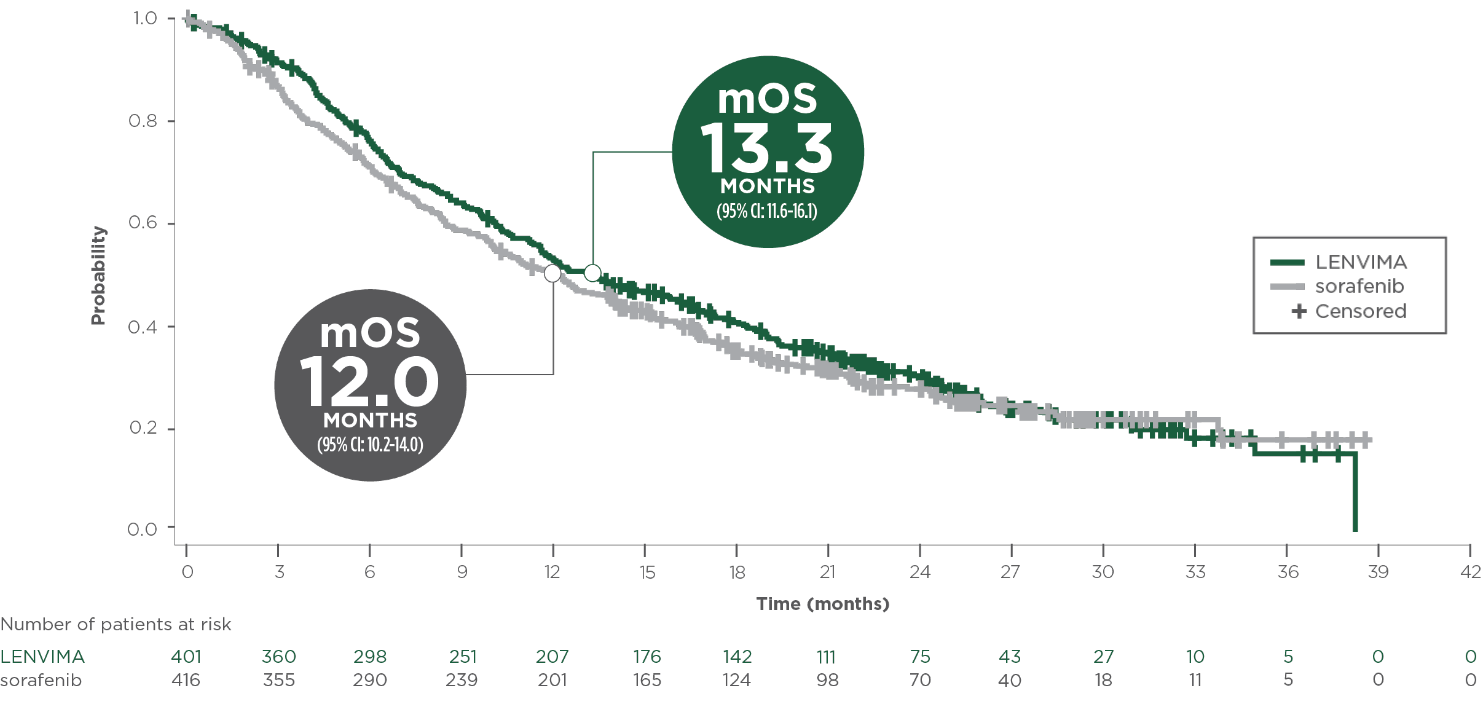
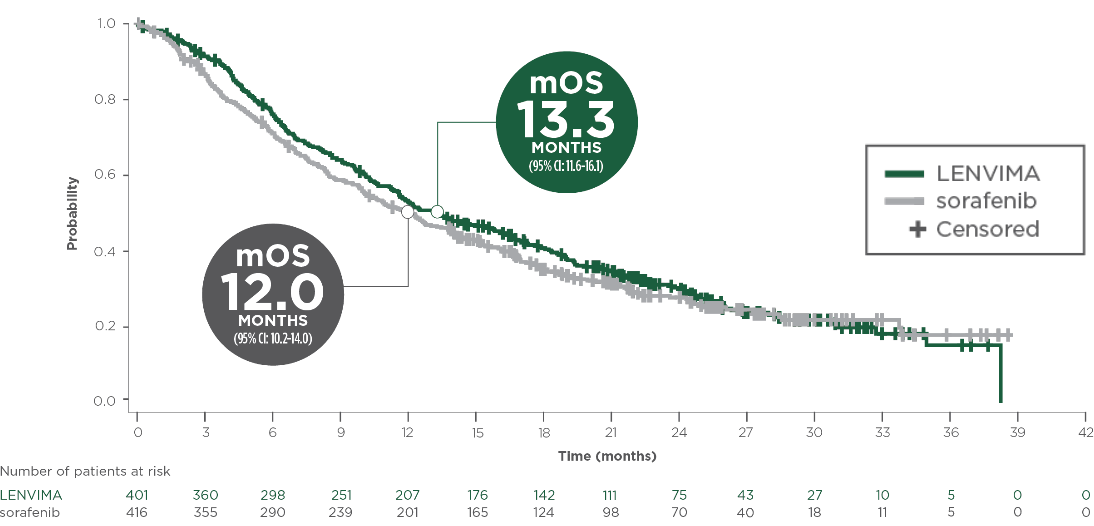
- aBased on landmark analyses after week 8 (represented as 0 on the x-axes).
Median PFS after week 8 and ORR1


- aDue to the landmark cutoff, PFS included fewer patients, as patients who did not reach the landmark were not included. Landmark PFS analyses included the following number of subjects: LENVIMA CP-B: 34; sorafenib CP-B: 24; LENVIMA CP-A: 329; and CP-A: 284.
Responses1,b
- Child-Pugh B
CR: 0% with LENVIMA vs 0% with sorafenib
PR: 28.3% (n=17) with LENVIMA vs 8.5% (n=4) with sorafenib
- Child-Pugh A
CR: 2.4% (n=10) with LENVIMA vs 0.9% (n=4) with sorafenib
PR: 40.4% (n=167) with lenvima vs 11.9% (n=51) with sorafenib
REFLECT=A Multicenter, Randomized, Open-Label, Phase 3 Trial to Compare the EFficacy and Safety of LEnvatinib (E7080) Versus Sorafenib in First-Line Treatment of Subjects With UnreseCtable HepaTocellular Carcinoma; ORR=objective response rate; OS=overall survival; PFS=progression-free survival; CI=confidence interval; CP-B=Child-Pugh B; CP-A=Child-Pugh A; CR=complete response; PR=partial response.
- bBy independent review per modified Response Evaluation Criteria in Solid Tumors.
Treatment-emergent AEs (TEAEs) occurring in ≥20% in either treatment arm among patients who deteriorated to Child-Pugh B within 8 weeks after randomization1,2
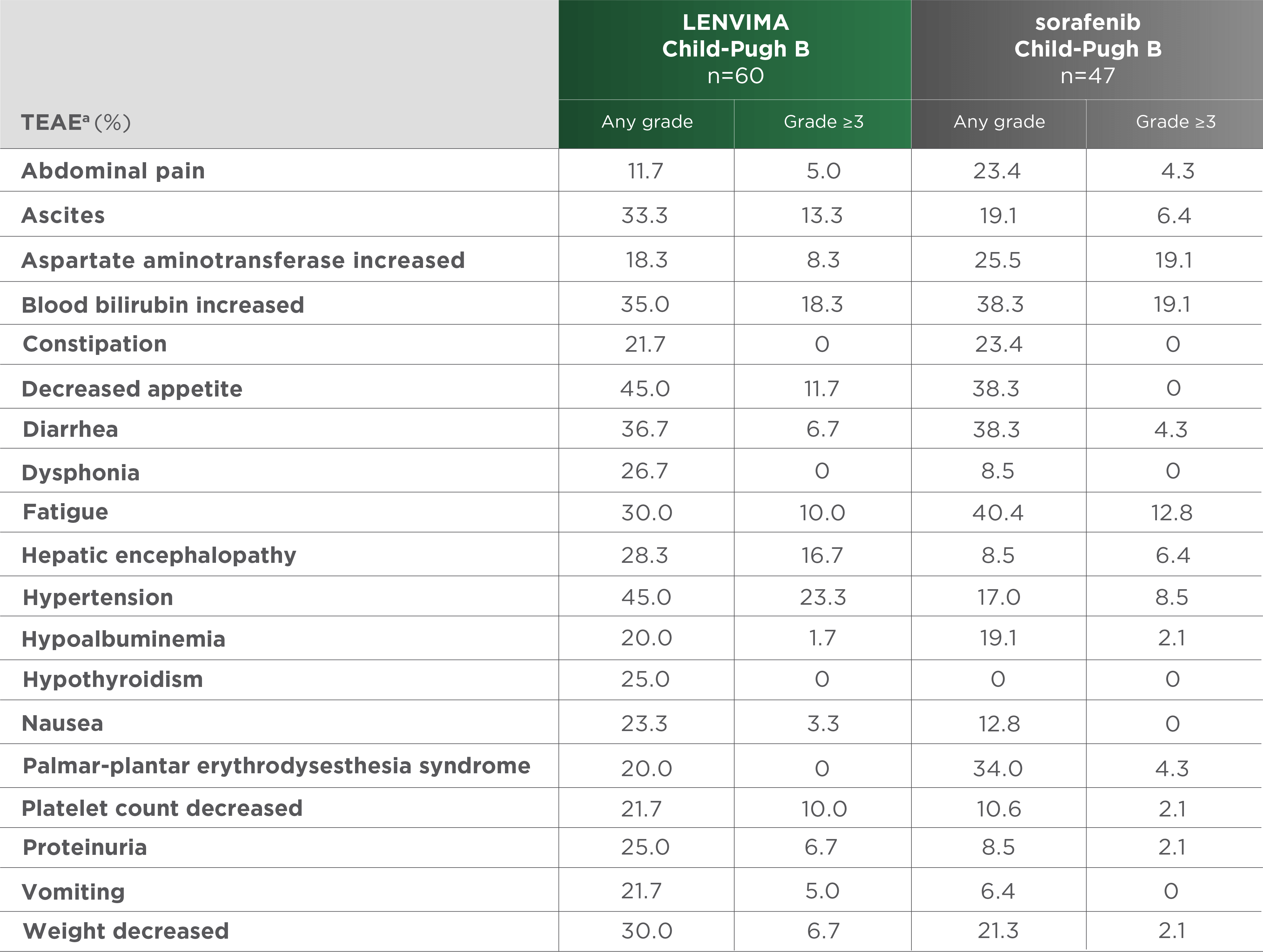
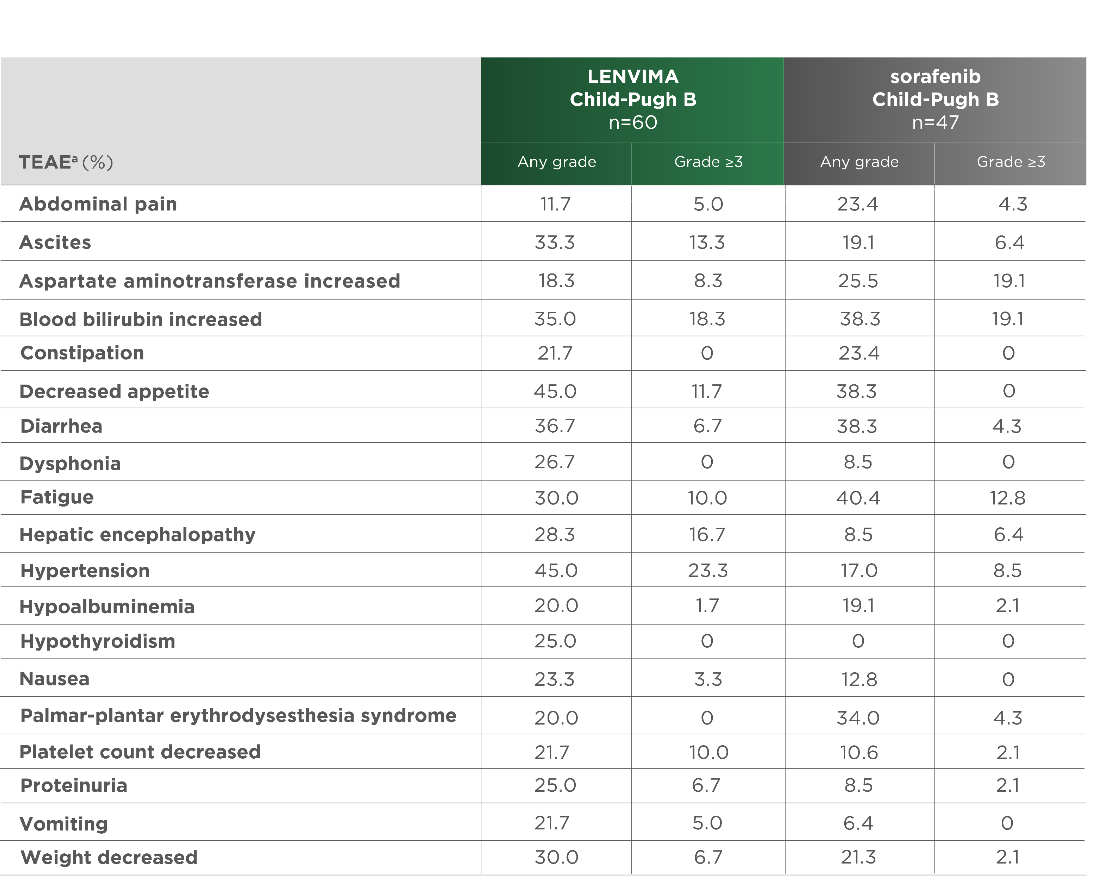
AE=adverse event.
- aAEs were graded using Common Terminology Criteria for Adverse Events version 4.0
Treatment-emergent AEs occurring in ≥20% of LENVIMA-treated patients who remained Child-Pugh A within 8 weeks after randomization1,2,a
- Most common treatment-emergent AEs of any grade in LENVIMA-treated patients who remained Child-Pugh A (n=413) within 8 weeks of randomization were hypertension (41.9%), diarrhea (39.2%), decreased appetite (32.2%), weight decreased (31.2%), fatigue (29.8%), palmar-plantar erythrodysesthesia syndrome (28.1%), proteinuria (24.7%), and dysphonia (23.2%)
AE=adverse event.
- aAEs were graded using Common Terminology Criteria for Adverse Events version 4.0
FEATURED VIDEO
An exploratory post hoc analysis of patients who progressed from CP-A to CP-B in the REFLECT trial
Dr Edward Kim discusses efficacy and safety in patients who progressed from Child-Pugh class A to Child-Pugh class B within 8 weeks of randomization in the REFLECT trial.1 Explore our video library.
CP-A=Child-Pugh A; CP-B=Child-Pugh B; REFLECT=A Multicenter Randomized, Open-Label, Phase 3 Trial to Compare the EFficacy and Safety of LEnvatinib (E7080) Versus Sorafenib in First-Line Treatment of Subjects With UnreseCtable HepaTocellular Carcinoma.
